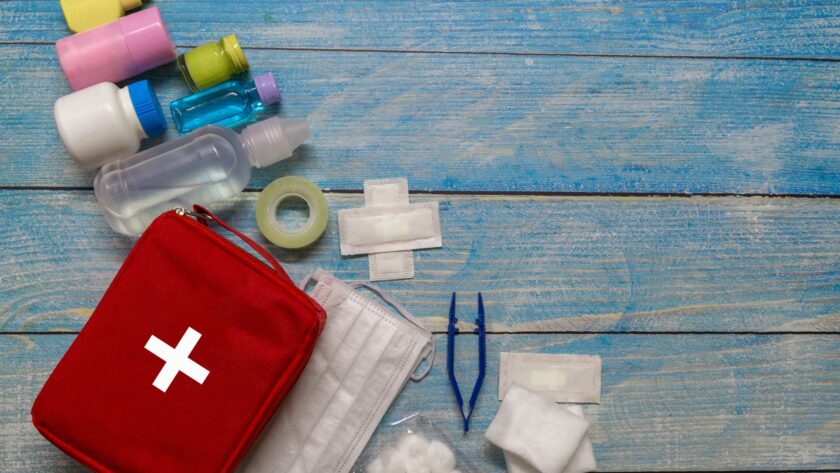Natural disasters can strike unexpectedly, wreaking havoc on our homes and communities. By taking proactive steps to prepare our homes for such events, we can minimize damage and ensure the safety of ourselves and our loved ones.
In this blog post, we will explore essential aspects of preparing your home for natural disasters. From understanding the risks to organizing emergency supplies, these guidelines will help you be better equipped to face any adversity nature may bring your way.
Understand the risks
The first step in preparing your home for natural disasters is understanding the risks specific to your area. Research the types of disasters that commonly occur, such as hurricanes, earthquakes, floods, wildfires, or tornadoes.
Consult local authorities and disaster management organizations to gain insights into the specific threats you may face. By understanding the risks, you can tailor your preparations accordingly and take appropriate preventive measures.
Create an emergency plan
Developing an emergency plan is crucial for ensuring the safety of your family during a natural disaster. Outline evacuation routes, establish designated meeting points, and establish a communication strategy. Assign responsibilities to family members, including caring for pets, securing the house, or gathering emergency supplies.
Practice your emergency plan regularly to ensure everyone is familiar with the procedures. Additionally, consider the needs of elderly or disabled family members and make appropriate accommodations.
Secure your home’s structure
To protect your home from natural disasters, reinforce its structure. Inspect doors and windows for weaknesses and consider installing storm shutters or impact-resistant glass. Strengthen the roof with hurricane straps or additional bracing. Anchor heavy furniture, appliances, and water heaters to prevent them from toppling during earthquakes or high winds.
Clear surrounding trees and trim branches that could potentially damage your home. Reinforcing your home’s structure is crucial for minimizing damage and ensuring your safety during a natural disaster.
Organize emergency supplies
Having essential emergency supplies readily available can make a significant difference during a crisis. Stock up on non-perishable food, bottled water, first aid kits, flashlights, batteries, a battery-powered or hand-cranked radio, and necessary medications.
Keep these supplies in a designated area that is easily accessible in case of an emergency. Regularly check and replace expired items to ensure their effectiveness when needed.
Backup power and utilities
During a natural disaster, power outages are common. Consider investing in a backup power generator or alternative energy sources like solar panels or wind turbines. These can provide electricity to keep essential appliances running and maintain communication lines.
Additionally, learn how to shut off utilities such as gas, water, and electricity if necessary to prevent further damage or hazards during an emergency.
Safeguard important documents
Protecting important documents is crucial in the event of a natural disaster. Store identification papers, insurance policies, property deeds, and other vital documents in a waterproof and fireproof container.
Consider making digital copies or using cloud storage as an additional precaution. Having these documents readily available will expedite insurance claims, aid in the recovery process, and facilitate any necessary legal or financial actions.
Maintain landscaping
Regularly inspecting and trimming trees is an essential aspect of property maintenance. Dead branches and potential hazards can become lethal projectiles in high winds, causing significant damage. For best results, hire an arborist to assess the state of your trees.
Another important step is to secure outdoor objects. Patio furniture, grills, or gardening tools can turn into projectiles during storms and cause significant damage. Finally, don’t forget to maintain proper drainage systems to prevent flooding and water damage to your home. Following these practices will go a long way in protecting your home during a natural disaster.
Stay informed
Stay informed about potential threats and emergency situations by signing up for local emergency alerts and notifications. Monitor weather forecasts regularly to stay aware of changing conditions.
Familiarize yourself with emergency response agencies and community resources available in your area, such as evacuation centers or emergency shelters. Being well-informed will help you make timely decisions and take appropriate actions to protect yourself and your family during a natural disaster.
Conclusion
Preparing your home for natural disasters is a responsibility that cannot be overlooked. By understanding the risks, creating an emergency plan, securing your home’s structure, organizing emergency supplies, and staying informed, you enhance your readiness to face any challenges that may arise. Take the necessary steps to safeguard your home, protect your loved ones, and increase your resilience in the face of nature’s forces. Remember, preparedness is key when it comes to mitigating the impact of natural disasters.




